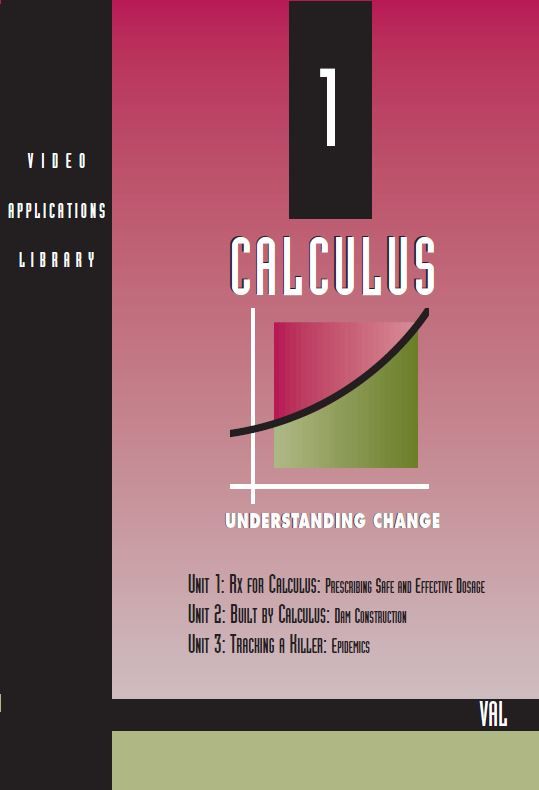Calculus: Understanding Change: Unit 3: Tracking a Killer: Epidemics
Author: COMAP, Text by Michael Jaye
How do doctors and pharmacologists use calculus to prescribe drugs? How do engineers use area, volume, and pressure equations to design dams? Calculus: Understanding Change gives students a powerful demonstration of the critical role calculus plays in our lives.
Unit 3: Tracking a Killer: Epidemics (14:03)
Summary of the Video
A children's game that dates from the Bubonic Plague, which swept Europe in the seventeenth century, opens this video. We then see scenes that remind us of the tuberculosis epidemic of the early twentieth century and of today's AIDS crisis. Medical researchers, we are told, face a multitude of questions in dealing with epidemics. These include the number of people who will contract a disease, the rate at which it will spread, and how it might be controlled. Because the rate at which diseases spread varies with time, calculus is an in1p01tant tool in the researchers' arsenal.
As a first step in modeling the spread of a disease, a simple model is created with the intention of improving the model until it is adequate. We are reminded of the importance of this technique in modeling and, indeed, in many kinds of problem-solving.
Starting with data, we then inspect a plot and make a first attempt at modeling the spread of an epidemic with a simple exponential function. The model is unsatisfactory because it grows without limit, and its predicted number of infected people quickly outpaces the actual number.
The scenario changes to a fictitious one in which a small community is plagued by a mysterious "red-eyed virus," brought to town by a single individual whose employment at a local diner causes the disease to spread quickly. Modeling assumptions are discussed, data presented, and a discrete model in which the disease spreads at a rate that is proportional to the product of the number of people infected and the number of people susceptible is introduced. The difference equation model is converted to a continuous one by shrinking the time period and taking the limit. However, the model still over-predicts the number who will be infected with the disease. Further assumptions about the rate of change in the number infected and the number susceptible lead to an in1proved differential equation model, in which we can see that the ratio of the rate of change of people infected to the rate of change of people susceptible is critical. The rate at which d1e disease spreads can be controlled by finding ways to keep this ratio small.
The video closes by bringing us back to the current AIDS crisis, reminding us of the importance of adequate assumptions in modeling and raising questions of how d1e critical ratio can be controlled in the case of a disease d1at takes seven to ten years for symptoms to appear.
Video support materials are available as part of COMAP full membership. Each video is accompanied by a user's guide with reproducible student exercises and quizzes.

Mathematics Topics:
Application Areas:
Prerequisites:
You must have a Full Membership to download this resource.
If you're already a member, login here.